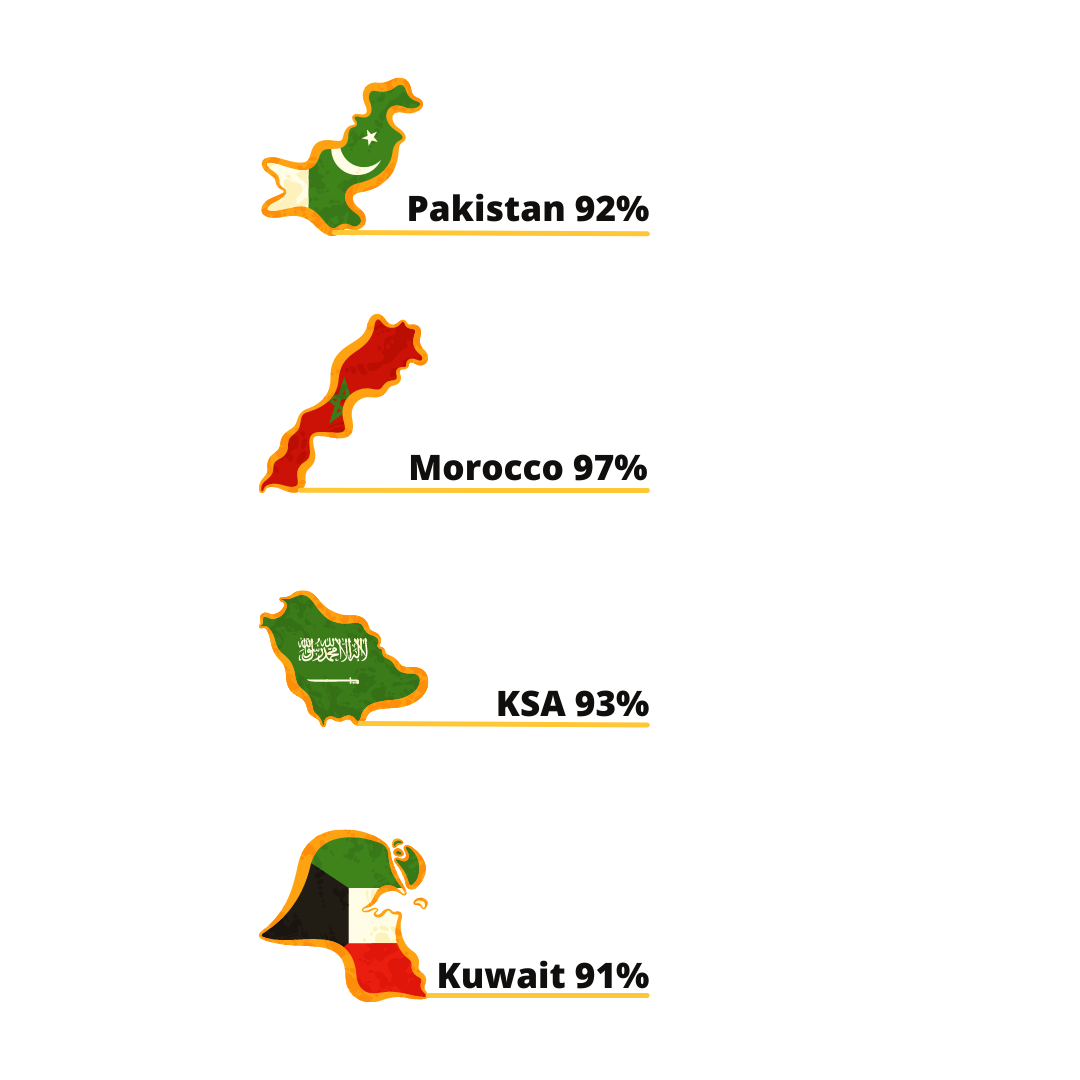What Makes People Happy?
Is the World Happiness Report sufficient to measure happiness or do we need to include other factors?

"The World Happiness Report has proven to be an indispensable tool for policymakers looking to better understand what makes people happy"
Jeffrey Sachs, SDSN Director
Is happiness quantifiable? Can specific measures be used to determine the happiness experienced by people? These questions have, time and again, plagued philosophers, psychologists, and policymakers alike who considered various measures in an attempt to understand what makes people happy. The World Happiness Report is one such attempt that has shaped country-level policies and as well as individuals' understanding of happiness and its causes. Largely using data from the Gallup world poll surveys as well as other surveys, this report is used to indicate the state of global happiness. Gallup uses a typical sample size of 3000 people from each country as a representative of a whole population and the survey is mostly conducted annually. However, often, annual surveys are not possible for some countries and hence their sample size is typically 1000 people.
This annual report ranks each country on its happiness score by using six key variables
For two out of the six variables, namely, GDP per capita and Healthy Life Expectancy, the Report used each country's own calculation of those values derived through quantitative and objective calculations. But for other variables, namely, Social Support, Freedom to make life choices, Generosity, and Perception of Corruption, the Gallup survey was designed with subjective questions based on a person's own evaluation of his happiness.
Most of the questions that are asked in the Gallup survey require answers that are either quantitative, for instance, on a scale of 1 to 10) or qualitative with questions like "Are you satisfied or dissatisfied with your freedom to choose what you do with your life?" These questions require the answer to be recorded as dummy variables in the form of Satisfied scored as 1 or Dissatisfied scored as 0
The Six Key Variables are:

World Happiness Report at a glance

Overall Trend of Global Happiness:
2020 has been a challenging year for all countries worldwide. The arrival of the pandemic has changed the very fabric of society. With increasing Covid-19 cases and the mortality rate, people were unable to leave their homes and had to observe isolation and social distancing. Many people were laid off from their jobs, and poverty levels reached an all-time high. The mental and physical health of millions of individuals around the globe was heavily affected. In such circumstances, we expected the happiness levels to fall in 2021. However, surprisingly that was not the case. The chart about happiness scores in 2021 for each continent across the world shows that the overall happiness of the world across each continent from 2020 to 2021 had increased, with the exception of South Asia. we see this trend through the upward sloping lines of the chart. The geographical map chart shows the general spread of happiness around the globe.
What is astonishing is that while the pandemic has affected the socio-economic structures of society with a high rate of unemployment and ban on social gatherings, yet still global happiness has seen a significant rise. Are there factors besides those in the World Happiness Report that may have a hand in this? In the next few sections, we will explore other variables not included in the Gallup survey in terms of their relationship with happiness in order to attempt to answer the question posed above.
Trend of happiness scores across continents
The bar race chart shows the change in the top and bottom 10 countries in the happiness rank over the years 2015-2021, with their relevant happiness scores. We see that countries with a high happiness score are mainly saturated in Western Europe while countries with a lower happiness score are mostly found in Sub-Saharan Africa as well as South Asia.
One realization from particularly the bar race chart is that the wealthiest countries such as US are not the most happiest ones. In fact, according to the rankings provided, people report happiness usually when they have a supportive social circle, have a comfortable living, have access to good health, and a government they can trust; more than the economic standing / GDP of the country. E.g US ranks at 19th despite being the wealthiest country while Finland ranks 1st while having a comparatively smaller GDP.
Comparison of Happiness Score across regions of world in 2021:
In order to do further analysis, a regional analysis of happiness scores is essential.
From the chart it can be seen that the Western Europe has the Highest average Happiness Score, on the other hand Sub Saharan Africa has the lowest average Happiness Score. A combination of several factors may have caused this disparity in happiness levels.
In order to understand this trend, it is necessary to see which factors are contributing to Happiness Scores in these two regions.
There is a clear difference in the GDP per person of these countries. We can observe that richer and economically well-off regions are happier. The same is the case for healthy life expectancy. Generally Western Europe is performing better in all factors, corruption in Sub Saharan African countries is hindering political, economic and social development and hence effects the growth. However, we need to ask are these variables enough to assess the happiness score alone, or can other factors explain happiness across the Globe?
Covid 19

World Happiness Score and Excessive Deaths due to Covid-19 :
In order to see if the world happiness score in any way gets affected by the world happiness score, we filtered the countries that faced the highest death rates due to Covid-19.
Then we filtered the happiness scores of these countries from 2015 to 2021. It was interesting to see that even when a part of the population of these countries died, it did not affect the happiness level of these countries at all, and it kept on increasing, as shown by the data that was presented in the world happiness report
Median age Effect and World Happiness Covid-19:
There exists an association between subjective sense of well-being with median age and life expectancy among people and it then affects their happiness level across the globe. Populations of varying levels of socioeconomic status exist around the world. The happier countries have higher median age that as shown by the graph above.
People living in rich countries can afford better health care, have access to better quality food, and their basic needs are fulfilled. Also, the government spends a large amount of taxes on well being of the people in these countries which is then correlated with higher median age of people living in rich countries relative to those who are living in poor countries
Making sense of Happiness
Considering other factors such as Suicide Rates, Religiosity and Terrorism with respect to happiness.

Suicide Rates and Happiness:
Suicide rates, in themselves, are an indispensable tool to measure happiness across all countries. A person who commits suicide, in most cases, is driven by a feeling of intense and acute misery and helplessness; they are overwhelmed by emotions of regret, desperation, and sorrow and see no other way out and no point in living anymore. All these are highly strong negative emotions that drive a person towards suicide. Hence, consequently, it can be assumed that the higher the suicide rates of a country, the lower its happiness rates should be. However, as we see in the following chart, this is not the case.
Interestingly, those countries which ranked the highest in the World Happiness Report for 2016 also have a high suicide level. Countries like Denmark and Finland with the highest scores in happiness (7.4 and 7.53 respectively)also have high scores in suicide levels (15.2 and 10.9 respectively) while countries like Afghanistan, a country ravaged with war, poverty, and destitution for the past 30 years and consequently with a low happiness score, has a comparatively low suicide score.
In order to study it further, we made some scatters plots to see the correlation between these two variables across various continents and to draw further insights from them.
In western Europe, we can observe that there exists a strong positive correlation between Happiness scores and Suicide rates. On the other hand, in Sub-Saharan Africa, there is a positive correlation too, showing that there are increasing suicide levels with happiness scores but to a lesser extent. Why do happier countries record such high levels of suicide?
As happiness is a subjective experience, each person experiences it differently. In happy countries with high suicide levels, it may be that the people who responded in those countries reported higher life satisfaction even when they are unhappy. There can be a disparity between a person's own perception of their happiness levels versus their actual happiness levels.
Another reason why the suicide rate is lower in poor rather than in rich countries may be that in developing countries, people's primary pursuit may be to improve their lifestyle. Their day-to-day struggles revolve around improving their standard of living and hence people have some cause to work towards and stay alive for. However, in developed countries such as the Scandinavian countries. their basic necessities such as health and education facilities as well as good housing etc is already provided by the state. People may not have much to work for which may lead to a feeling of loss of meaning. These people do not need money for happiness, which might lead to su
However, it could also be the case that in poor and underdeveloped countries that are war-or poverty-stricken, data for suicide rate is simply underreported because of which, their values of suicide rates may be higher than they are in the data.
But nevertheless, whatever the reason may be, the fact remains that even in countries like Syria, Afghanistan, and Sudan which are extremely poor the suicide rate is very low as compared to countries like Switzerland and Iceland that rank highest on the happiness report and are very rich
Terrorism:
Here we are seeing a trend over time between the terrorist attacks and happiness score. We see a starking relation between terrorism attacks rate and the countries happiness score. The countries on the lower part of the happiness scale have a staggering high terrorism rate compared to the countries on top of the happiness score. These regions include Africa, Central Europe, South and Southeast Asia which all have middle to low happiness scores. It shows that terrorism affects the whole community, not just a few individuals who directly suffered from such activities. It threatens their sense of security which is highly necessary to lead a peaceful and happy life. Hence, terrorism can also be a strong factor that can be taken into consideration by people who want to understand what affects happiness.
Religiosity:
The following analysis is based on the annual human freedom index report and they surveys monitored by Gallup.
The candy shows the effect of religiosity combined, in the human freedom index report.

This image shows the effect of religiosity relative to other effects and total value in calculation of human freedom score

Human freedom can be equated to this box, which shows the proportion of religion in determining overall human freedom score.

This image shows the significance of human freedom score in explaining the happiness score, according to the world happiness report.

This analysis can be extended further to note that a lot of countries have high levels of religiosity, according to another Gallup report. Extracting 4 countries who value religion highly according to the Gallup survey.

The trend derived from the Gallup report on religiosity shows that these countries value religion over economy and over family for a great percentage, both of the factors which are major contributors to happiness score.
Therefore, if we factor in the religiosity aspect in happiness score, these countries will have a significant increase in their scores
Policy Implications

Policy Recommendations:
While the World Happiness Report has proved to be an invaluable tool which has shaped our understanding of happiness and while it has furthered political and social discourse in its attempt to quantify happiness for future policies and plans, our analysis shows that additional factors must also be take into consideration.
Our analysis of median age shows that it correlates with happiness scores as well as with countries which saw the highest death rate during covid. Happiness score has not been affected since the report does not include any question about how possibly deaths in a country can correlate with the happiness level. So, generally the happiness of a country is increasing on average although a large number of people are dying.
Moreover, the analysis on religiosity shows that the happiness score can witness a positive increment for many countries, if religion is also considered according to its value relative to economy or family. It further gives room to explore how a core function of any religion is dealing with human anxieties and offering comfort and contentment. All these factors add up to shape the human experience of happiness.
Furthermore, terrorism leads to the worst kind of human suffering and it is meaningful to draw parrallels between high terrorism rate and low happiness score in countries. Terrorism rate also explains the happiness score indirectly because it directly affects factors like human freedom and mental health and in severe cases even mortality rates and median age. The happiness score is a culmination of these variables and that is why we were able to visualise a strong negative trend.
In addition to this, comparing the relationship between suicide rates and happiness scores has shown that there might be some flaw in the way happiness is measured. These reports only show what an individual perceived his happiness level to be and might not be an actual values of their happiness. Social desirability bias comes into play here; individuals want to appear happier than they are actually. Or in fact, people might simply be unaware of their own true level of happiness. Hence, they might project themselves to be happier, more satisfied and more at peace. The opposite is also true; people might portray themselves with a lower happiness score. These scores also are heavily dependent on factors such as age and gender of a person as well as his/her job satisfaction, employment status etc at the time of filling out the survey. A person stuck in traffic after a long and tiring day at work will rate their happiness with a low score. Suicide rates have shown that additional steps need to be taken and additional factors considered to get a better and truer understanding of happiness.
Hence it is recommended that the agencies like Gallup which use surveys to calculate the happiness score of the world should also consider other variables that might be highly correlated with the happiness level, and are not yet explored by the world happiness report. This will give the policy making authorities, governments, and organizations a better understanding of the factors that they should look into in order to improve the well being of the people. Even for policy makers one of the biggest issue is the to determine what factors affect the happiness level in economy so rather than just asking people how would they rate their happiness or how they perceive certain factors happiness report should also focus on factors like suicides, mental health and other factors that are explored in our story and observe if these can effect the well being of nations.
Citations
This visual essay was created for the course 'Telling Stories with Data SS 272' at Lahore University of Management Sciences under the supervision of Ma'am Mehr Asma Javed
Citizens speak out about corruption in Africa. (2019, July 11). Retrieved from Transparency International: https://www.transparency.org/en/news/citizens-speak-out-about-corruption-in-africa
Franklin, P. (2015, July 29). Why do the happiest countries have the highest suicide rates? Retrieved from conservativehome: https://www.conservativehome.com/the-deep-end/2015/07/why-do-the-happiest-countries-have-the-highest-suicide-rates.html
Grahame F Evans, E. Z. (2019). Happier countries, longer lives: an ecological study on the relationship between subjective sense of well-being and life expectancy. National Library of Medicine. Retrieved from https://pubmed.ncbi.nlm.nih.gov/28786746/
Graves, D. (2019, April 19). Happier Countries Are More Suicidal: A Look at the World Happiness Report and Suicide. Retrieved from Medium: https://medium.com/@dtg319/happier-countries-are-more-suicidal-a-look-at-the-world-happiness-report-and-suicide-d5f44f69ce8e
Helliwell, J. F. (2021, March 20). Overview: Life Under Covid. Retrieved from World Happiness Report : https://worldhappiness.report/ed/2021/overview-life-under-covid-19/
Importance of religion by country. (2021, November 14). Retrieved from Wikipedia: https://en.wikipedia.org/wiki/Importance_of_religion_by_country
Moore, D. W. (2002, April 16). Importance of Religion Among Predominantly Islamic Countries. Retrieved from Gallup: https://news.gallup.com/poll/5821/importance-religion-among-predominantly-islamic-countries.aspx
Pykett, J. (2018, September 18). Happiness is the metric of the future – but there are problems with how we measure it. Retrieved from Scroll.in: https://scroll.in/article/894158/happiness-is-the-metric-of-the-future-but-there-are-problems-with-how-we-measure-it
Religion. (n.d.). Retrieved from Gallup: https://news.gallup.com/poll/1690/religion.aspx
Savage, M. (2019, September 25). Being depressed in the 'world's happiest country'. Retrieved from BBC: https://www.bbc.com/worklife/article/20190924-being-depressed-in-the-worlds-happiest-country
Suicide Morality Rate(per 100,000 population), Retrieved from The World Bank: https://data.worldbank.org/indicator/SH.STA.SUIC.P5
Western Europe and EU: Stagnating anti-corruption efforts and weakening democratic institutions. (2019, January 29). Retrieved from Transparency International: https://www.transparency.org/en/news/cpi2018-western-europe-eu-regional-analysis
WHR Population Analysis: https://www.kaggle.com/murugeshm1/whr-population-analysis/data
World Happiness Report: https://www.kaggle.com/unsdsn/world-happiness
Transparency International. “Western Europe and EU: Stagnating Anti-Corruption Efforts and Weakening Democratic Institutions - News.” Transparency.Org, 29 Jan. 2021, www.transparency.org/en/news/cpi2018-western-europe-eu-regional-analysis.